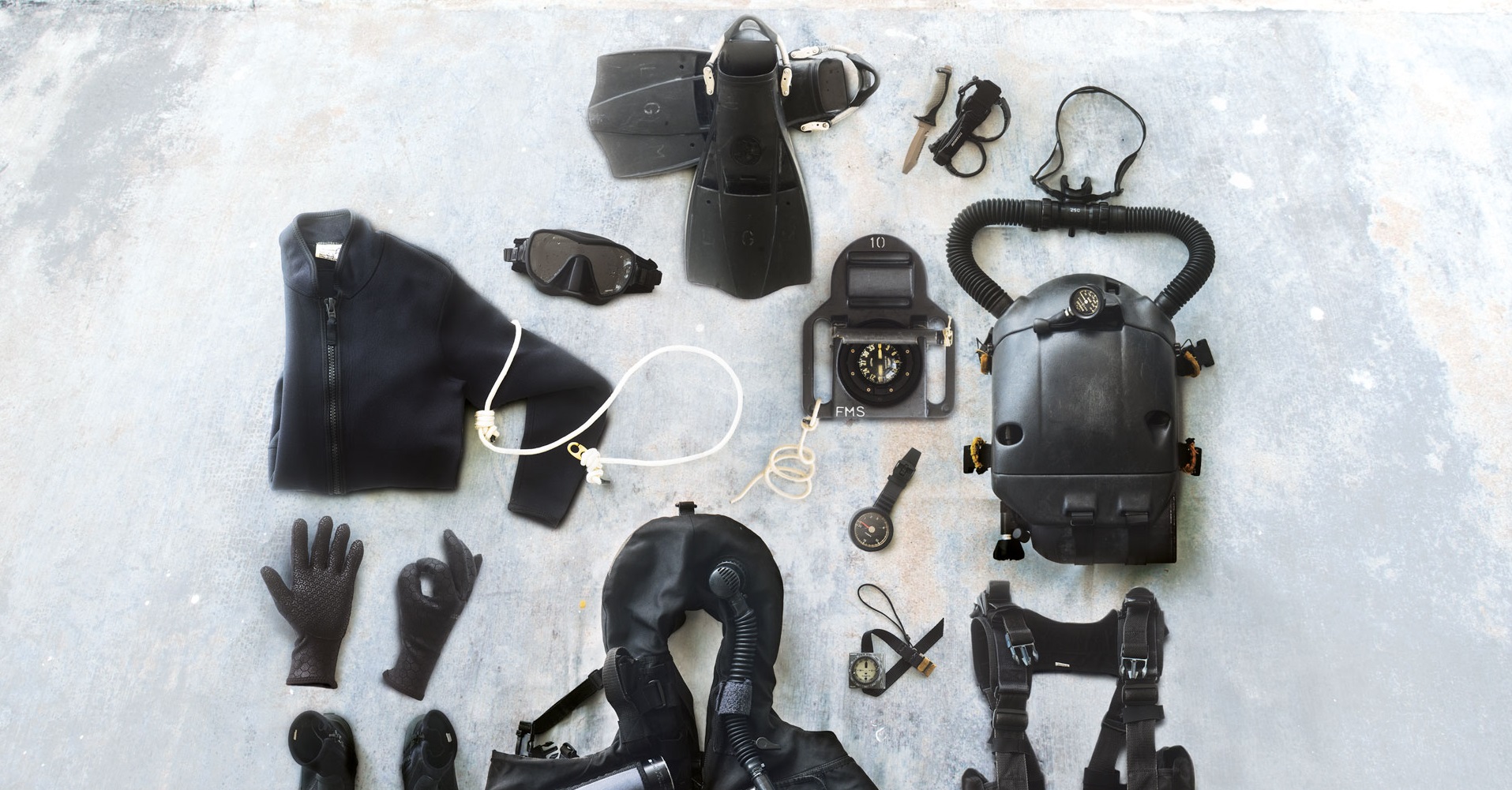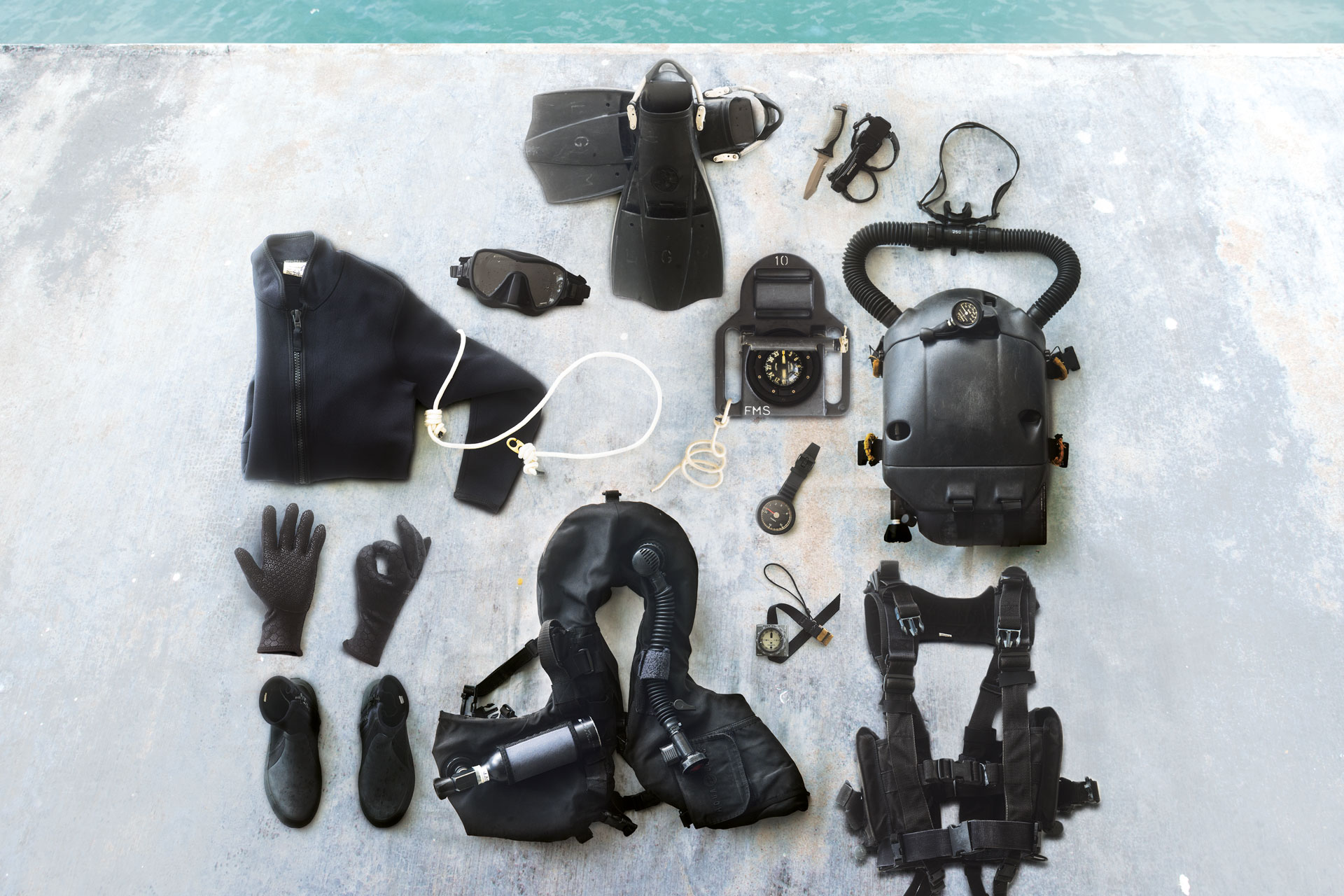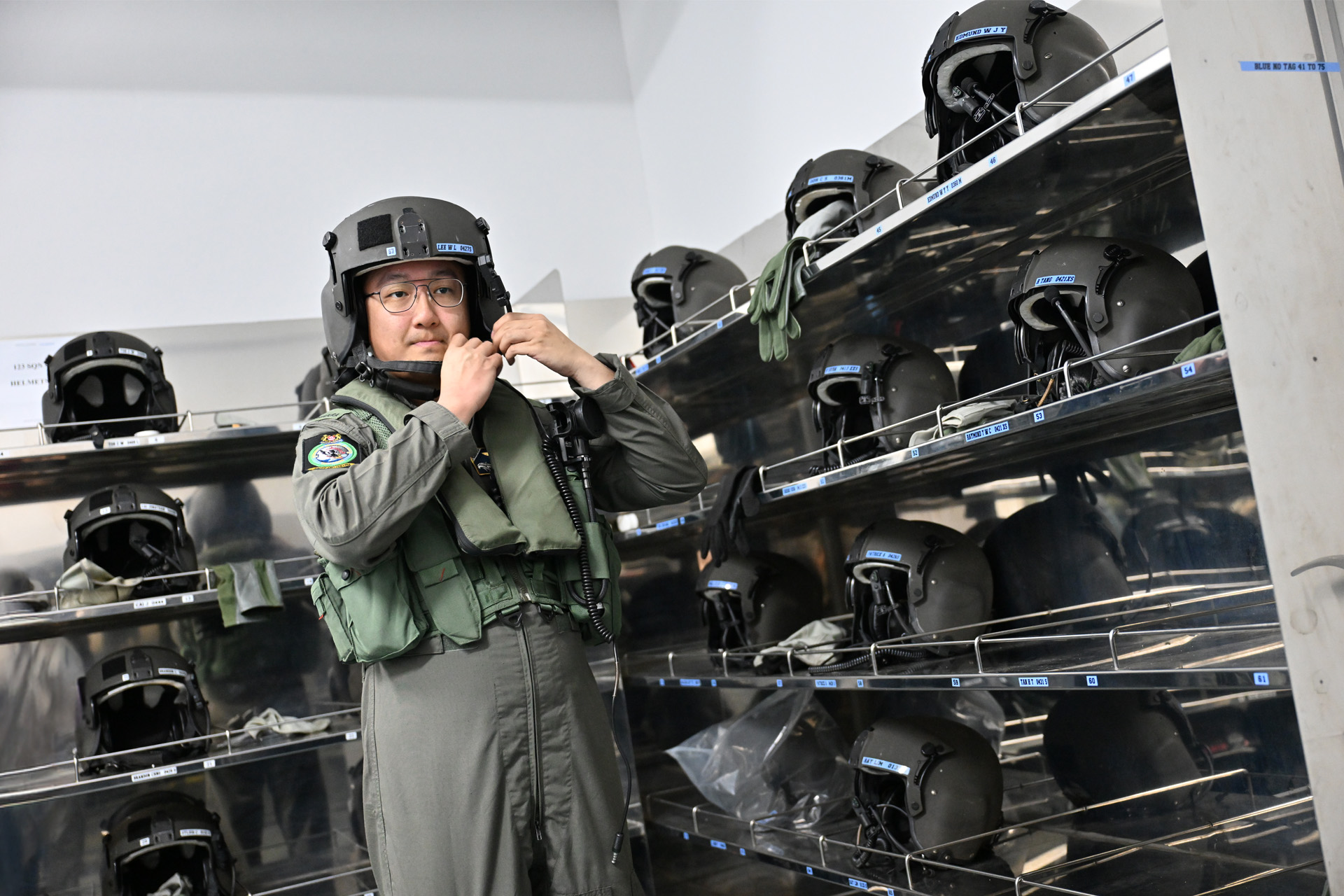TECHNOLOGY
FROG WEAR
01 May 2018
Take a peek at what the elite frogmen of the Naval Diving Unit don when they enter the ocean's depths, in the first of a three-part series on everyday military gear.


1) Dive Mask
Helps with vision underwater and provides some protection for the eyes against debris and other objects in the water.
2) Full Wetsuit
For use in tropical waters. At 3mm thick, the suit provides some warmth, as well as protection against cuts from underwater hazards.
3) Buddy Line
Used by a diver to tether himself to his buddy for safety. The brass piece at the end of the 1.5m-long line is referred to as an Inglefield clip, and is used to connect two buddy lines.
4) Gloves
Its ultra-grippy surface provides traction for the diver's hands when grasping tools and adjusting hisdive gear. Also protects the diver's hands against cuts from underwater hazards.
5) Booties
Made from the same neoprene material used in wetsuits. Apart from providing traction on the seabed, the booties protect the diver's feet from cuts.
6) Buoyancy Compensator
Allows the diver to adjust his buoyancy in the water. This can function as a life jacket when needed.
7) Fins
Worn over the booties, these fins may look cumbersome, but they amplify the diver's kicks underwater and allow him to swim faster, while enhancing agility and manoeuvrability.
8) Navigation Board
Helps the diver navigate underwater. The highly legible ball compass in the centre gives the diver a sense of bearing when holding the device in both hands. The board also has a light-stick holder for poor-visibility conditions.
9) Knife
Every diver carries a sheathed knife strapped to the calf. Divers occasionally use the blade as a tool, hence the squared-off tip.
10) FROGS rebreather
The Full Range Oxygen Gas System (FROGS) allows a diver to stay underwater for extended periods of time. A soda lime canister absorbs exhaled carbon dioxide, and the consumed gas is replaced with oxygen from an attached tank. The diver breathes through a mouthpiece connected to the hose and there are no visible bubbles when the diver exhales.
11) Depth Gauge
Tells the diver how deep he is at any point of the dive.
12) Wrist Compass
When there are no other navigation aids, this helps a trained diver to navigate underwater.
13) Harness
Worn around the torso, it holds weight plates to counteract the human body's natural buoyancy. There are quick-jettison handles in case the diver needs to surface quickly in an emergency.
ALSO READ IN TECHNOLOGY

AI joins the fight in national cyber defence exercise
12 Nov 2025
AI and closer collaboration among agencies and industry are taking centre stage in this year’s Critical Infrastructure Defence Exercise (CIDeX).

They built this city
01 Oct 2025
Turning vision to reality: the team behind SAFTI City clinches the Defence Technology Prize 2025 Team (Engineering) Award!

Operating over skies & seas
22 Aug 2025
This gear is designed to help a Sensor Supervisor survive emergencies in the air and at sea.


